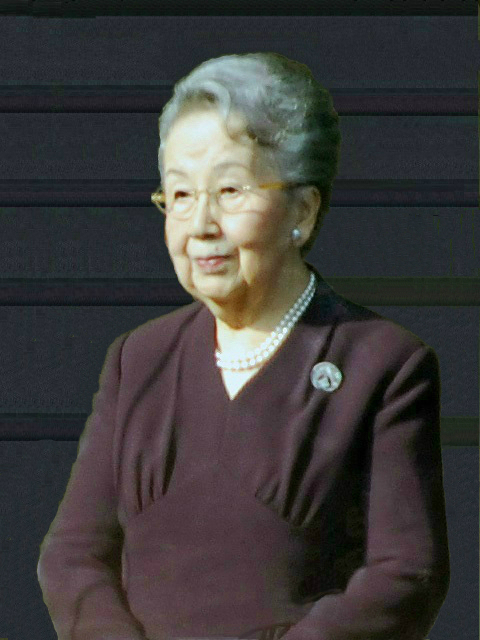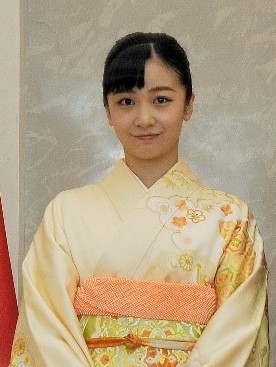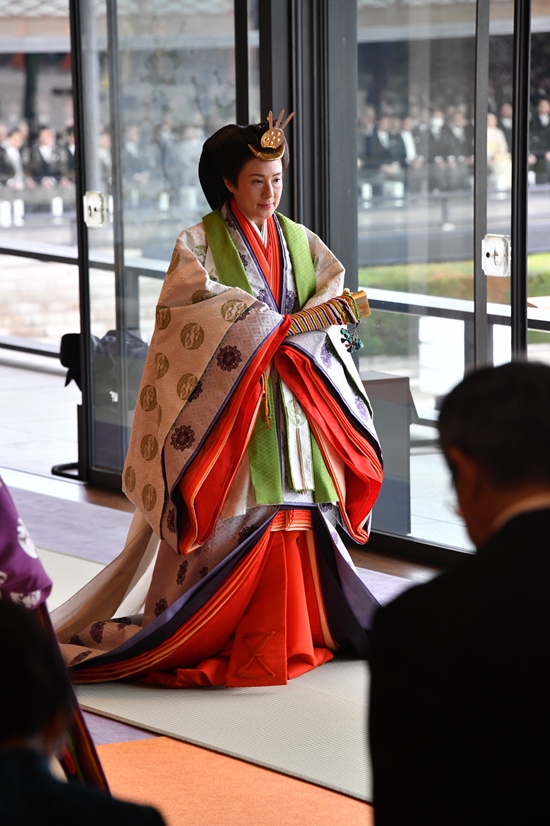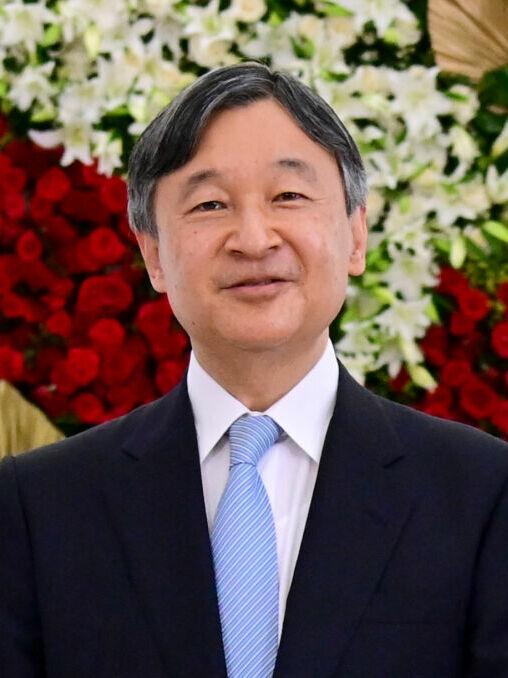by Susan Flantzer © Unofficial Royalty 2014

Photo Credit – japandailypress.com
Her Imperial Highness Princess Nori was born on April 18, 1969, at the Aoyama Detached Palace in Tokyo, Japan. She is the third of the three children and the only daughter of Emperor Akihito and Empress Michiko (born Michiko Shōda). Shortly after her birth, her grandfather Emperor Shôwa (Hirohito) named her Sayako and granted her the title Princess Nori (Nori no miya Sayako Naishinnô).

Princess Nori with her mother; Credit – http://www.yuko2ch.net
Sayako has two elder brothers:

Seated: Emperor Akihito, Empress Michiko; Standing: Princess Nori, Crown Prince Naruhito, Crown Princess Masako, Prince Akishino, Princess Akishino; Credit – freepages.genealogy.rootsweb.ancestry.com
Princess Nori completed her primary and secondary education at Gakushūin whose original purpose, before World War II, was to educate members of the aristocracy including members of the Imperial Family. Members of the Imperial Family have continued to attend Gakushūin for their primary, secondary, and university education. Princess Nori continued her university education at Gakushuin University and she graduated from the Department of Japanese Literature in the Faculty of Letters in March 1992.
Later in 1992, Princess Nori started a career as a researcher at Yamashina Institute for Ornithology where she specialized in the study of kingfishers. The princess was also interested in traditional Japanese dance and performed several times at the National Theater. She also participated in activities related to the training and use of guide dogs for the visually impaired.

Princess Nori the ornithologist; Credit – http://www.hellomagazine.com
On December 30, 2004, the Imperial Household Agency announced the engagement of Princess Nori to Yoshiki Kuroda, a 40-year-old urban designer with the Tokyo Metropolitan Government. Princess Nori and Yoshiki Kuroda, a longtime friend of the princess’ brother Prince Akishino, had known each other since childhood but were re-introduced by Prince Akishino in 2003. According to Article 12 of the Imperial Household Law of 1947, “In case a female of the Imperial Family marries a person other than the Emperor or a member of the Imperial Family, she shall lose the status of Imperial Family member.” Upon her marriage, Princess Nori would have to relinquish her title from birth, her official membership in the Imperial Family, and any monetary allowance from the state. After her marriage, Her Imperial Highness Princess Nori would be known as Sayako Kuroda. Three of Emperor Akihito’s sisters also were required to relinquish their membership in the Imperial Family upon their marriages.

Princess Nori and Yoshiki Kuroda at the press conference announcing their engagement; Credit – www.chinadaily.com
On November 15, 2005, about 30 people from both families attended the Shinto wedding at the Imperial Hotel in Tokyo, Japan, which has no relation to the Imperial Family. Princess Nori chose a white silk dress with a pearl necklace instead of the 12-layered “juni hitoe” wedding kimono traditionally worn by female members of the Imperial Family, and her groom wore a morning suit. The Emperor and Empress attended the wedding, as well as Crown Prince Naruhito, Crown Princess Masako, and other members of the Imperial Family.

Photo Credit – www.dailytelegraph.com.au
The bride and groom held a news conference after the wedding ceremony at the hotel and Sayako expressed her intention to live a new life. “Holding memories of the days with my family in my mind, I am going to face a new life as a member of the Kuroda family,” she said. A reception that followed the news conference was attended by 130 guests.

Mr. and Mrs. Yoshiki Kuroda enter their wedding reception; Photo Credit – www.beaumontenterprise.com
Sayako and Yoshiki Kuroda started their life together at a condominium they rented near the palace. The government provided the couple with a one-time payment of 152.5 million yen or 1.29 million dollars. Sayako resigned from her job as an ornithologist to focus on her new life.

Sayako and Yoshiki Kuroda enjoying an outing with Princess Akishino and her son Prince Hisahito in 2009; Credit – www.logsoku.com
In 2012, Sayako was given the role of a sacred priestess at the Ise Shrine which recognizes the ancestral gods, specifically the Sun Goddess, Amaterasu Omikami, from whom it is believed that the Imperial Family descended. She served as an assistant to the supreme priestess at the shrine, Atsuko Ikeda, Emperor Akihito’s older sister, who also had to relinquish her membership in the Imperial Family upon her marriage. The supreme priestess serves the Sun Goddess, representing the Emperor. The title has always been held by a current or former member of the Imperial Family. In 2017, Sayako replaced her aunt as the supreme priestess at the Ise Shrine.

Sayako Kuroda at a ceremony at the Ise Shrine; Credit – https://imperialfamilyjapan.wordpress.com
Since her marriage, Sayako has continued to appear during some formal occasions with other members of the Imperial Family. She was among the guests during a banquet held at the Tokyo Imperial Palace in honor of King Philippe and Queen Mathilde of Belgium in October 2016. In 2019, Sayako and her husband attended the enthronement ceremonies for her brother Emperor Naruhito.
This article is the intellectual property of Unofficial Royalty and is NOT TO BE COPIED, EDITED, OR POSTED IN ANY FORM ON ANOTHER WEBSITE under any circumstances. It is permissible to use a link that directs to Unofficial Royalty.






































